For some places, it can be more about the journey and not the destination. We found this to be very true while on a day trip to the Perfume Pagoda in Vietnam from Hanoi. Located about 60 km or two hours from the capital city, this is one of the country’s most popular temple and shrine complex. Read on to find the things to do and attractions along the way.
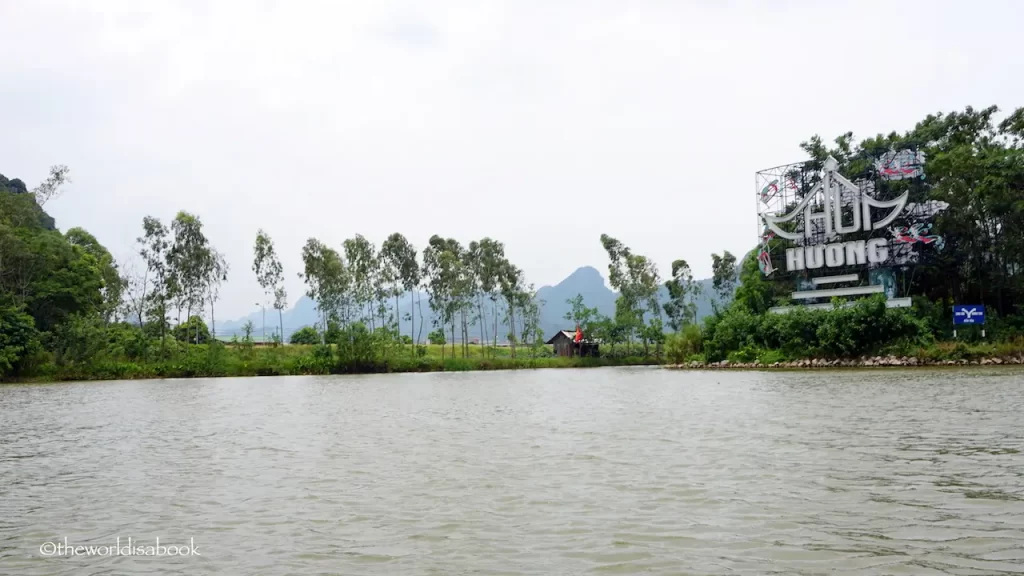
The Perfume Pagoda, known locally as Chua Huong or Inner Temple, is a popular local attraction. It was believed to have been built in the 15th century. The locals built many of the Buddhist temples and shrines along the limestone Huong Tich Mountains.
No roads lead to the area. It is only accessible by boat, cable car and walking many steps. This inaccessibility makes it a popular trip for pilgrimages.
We parked at the Duc Pier town surrounded by rice fields and located by the river. We had a private driver and tour guide by luck when the other couple cancelled. The town was quite small but worth a look if you have time for a glimpse into the local culture.
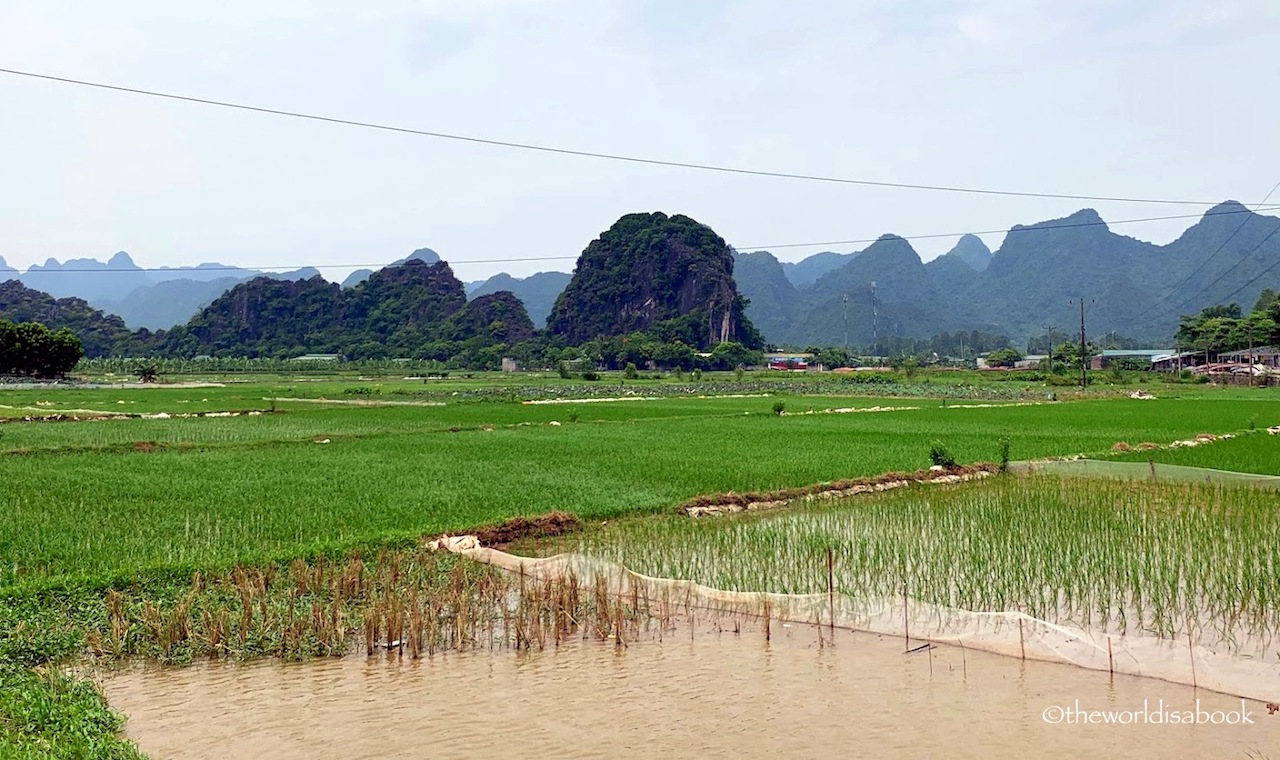
The Boat Ride to the Perfume Pagoda
The first part of our journey involved a ride on an boat through the Yen Stream. A local woman was our sole rower and she was quite impressive.
She had been rowing tourists and pilgrims for 40 years along this river. Our group consisted of my family, our tour guide and the driver.

She rowed the six of us, including three men, almost non-stop for over an hour. It was remarkable to watch her expertly maneuver, row effortlessly and never sweat throughout the journey.
We passed by a few other boats. Local women rowed all the boats. They were amazing. We had the same experience while on a day trip to the Trang An -Bai Binh pagoda area.

There were also some small temples along the river to stop and even some restaurants for dining while watching the boats go by. We even saw a couple of duck farms.
The Yen stream is about 1.86 mile (3 km) and flows between two mountains surrounded by a very green and verdant landscape during our visit. It was such a peaceful ride as we passed by rice fields and silhouettes of nearby mountains and hills. We were glad it was a bit cooler here too.
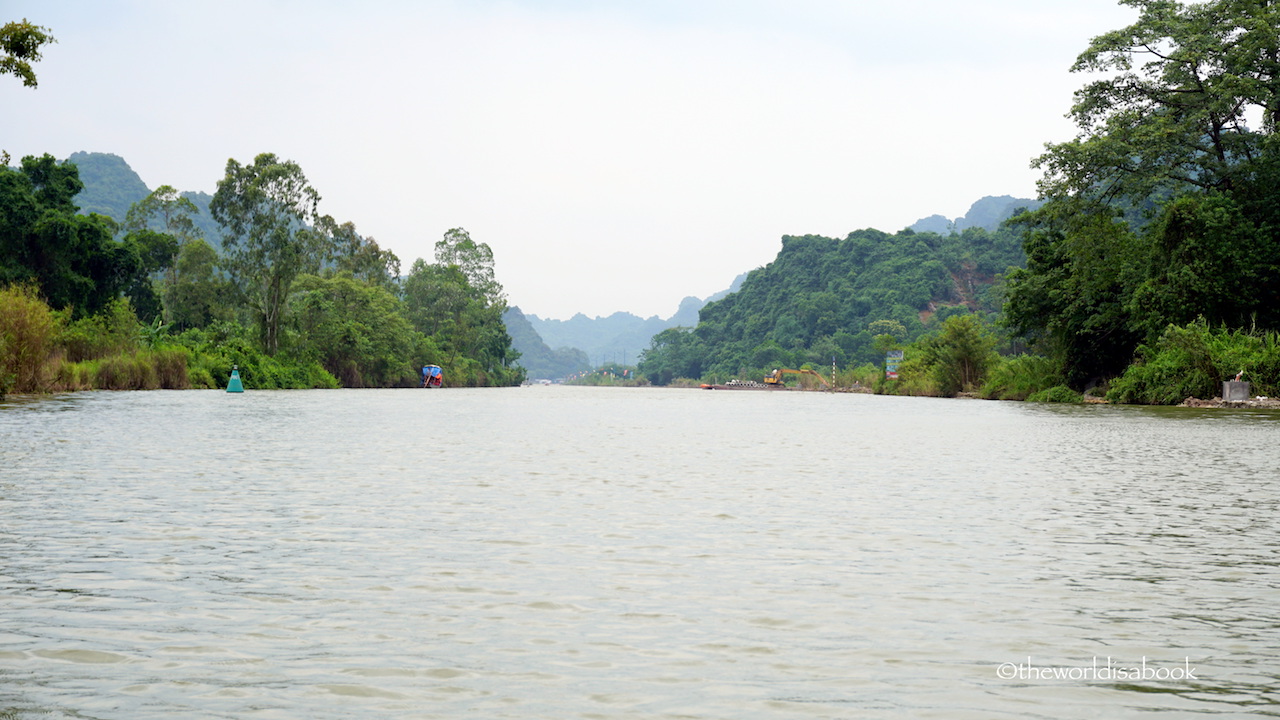
The Lotus Pond
My favorite part was passing by several lotus ponds. We found out that the lotus is Vietnam’s national flower, known as the symbol of beauty, purity and commitment. The Vietnamese use every part of the plant for dish ingredients, wrap food, medicine and even tea.

It was a bit early for the full blooming season but we found many hints of pink. Our guide told us that the flowers close and sink underwater at night and re-emerges and opens again as the sun rises.
Locals also call it the flower of dawn. Many blooms last about two months and wilt around July or August.
Our rower took us near one of the flowers to get a close-up look. This was our first time seeing a lotus flower in real life. It was just beautiful and exquisite.

The Perfume Pagoda Trek
The boat landed on an area with some vendors at the base of Huong mountain. Most of the many structures were closed for the season.
There was a large dining hall with several food vendors.It was around lunchtime when we got here. Our guide ordered all these delicious food which was actually too much even for my husband and son.
This was one of the first temples we saw – Thien Tru Pagoda which means Heaven’s Kitchen. The structure looked so well preserved. It makes one wonder how many visitors have climbed these steps after all these centuries.
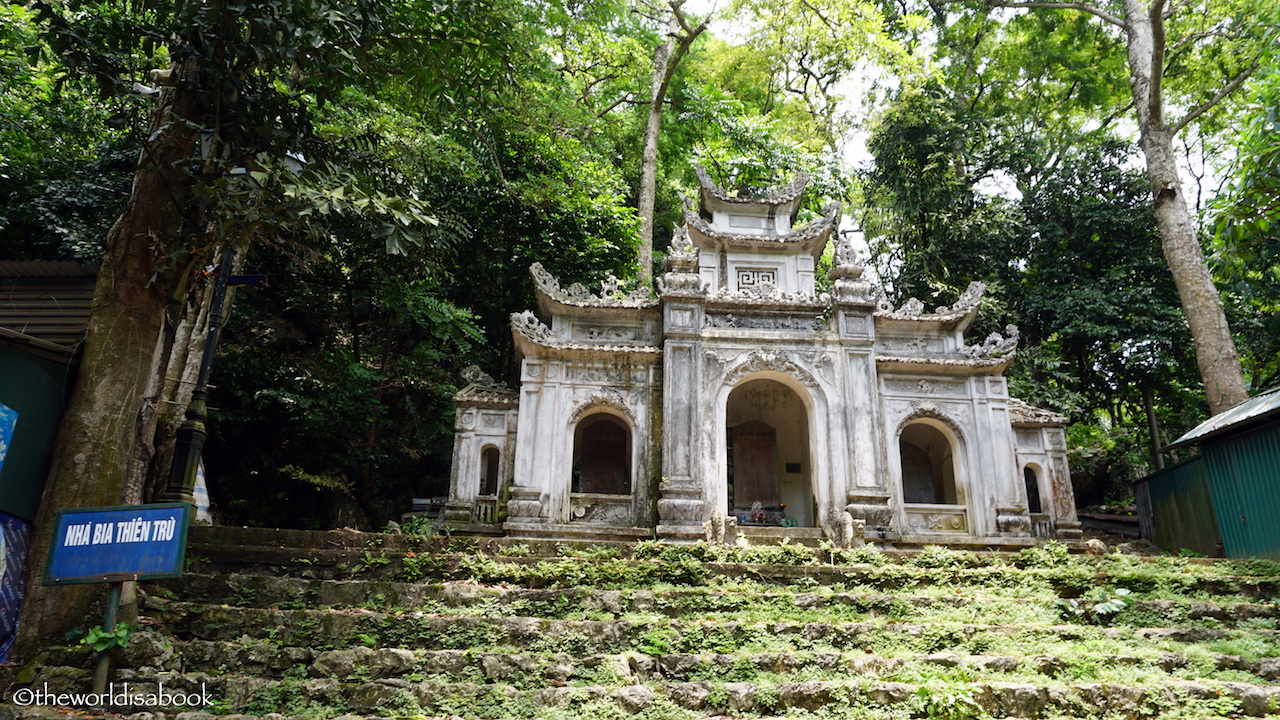
Getting to the Perfume Pagoda
Getting to the main attraction of the Perfume Pagoda was quite a long and sometimes, a steep uphill walk. While we saw some people actually walking in the summer heat, we did the more comfortable and faster route.
There was a cable car that whisked visitors closer to the mountain and the pagoda. The fees are minimal and well worth it especially with kids. It was a less than 10-minute ride over the forest and beautiful scenery.

But, there was another uphill walk and some steep stairs before we reached our destination. We stopped a lot to enjoy the scenery and relax since it was quite hot and humid. It gave us an opportunity to enjoy views like these on the platforms.

The Cave
The main attraction is the Huong Tich Cave which translated to “traces of fragrance” – hence, the name Perfume Pagoda. No obvious scents floating here.
I honestly envisioned a cave and pagoda surrounded by fragrant flowers upon hearing the name. I was so wrong with this vision.
This was our first glimpse of the cave as we descended the stairs. Our guide told us that it was supposed to resemble a dragon opening its mouth. The middle area was either supposed to be the tongue or tonsil area. Can you see it?
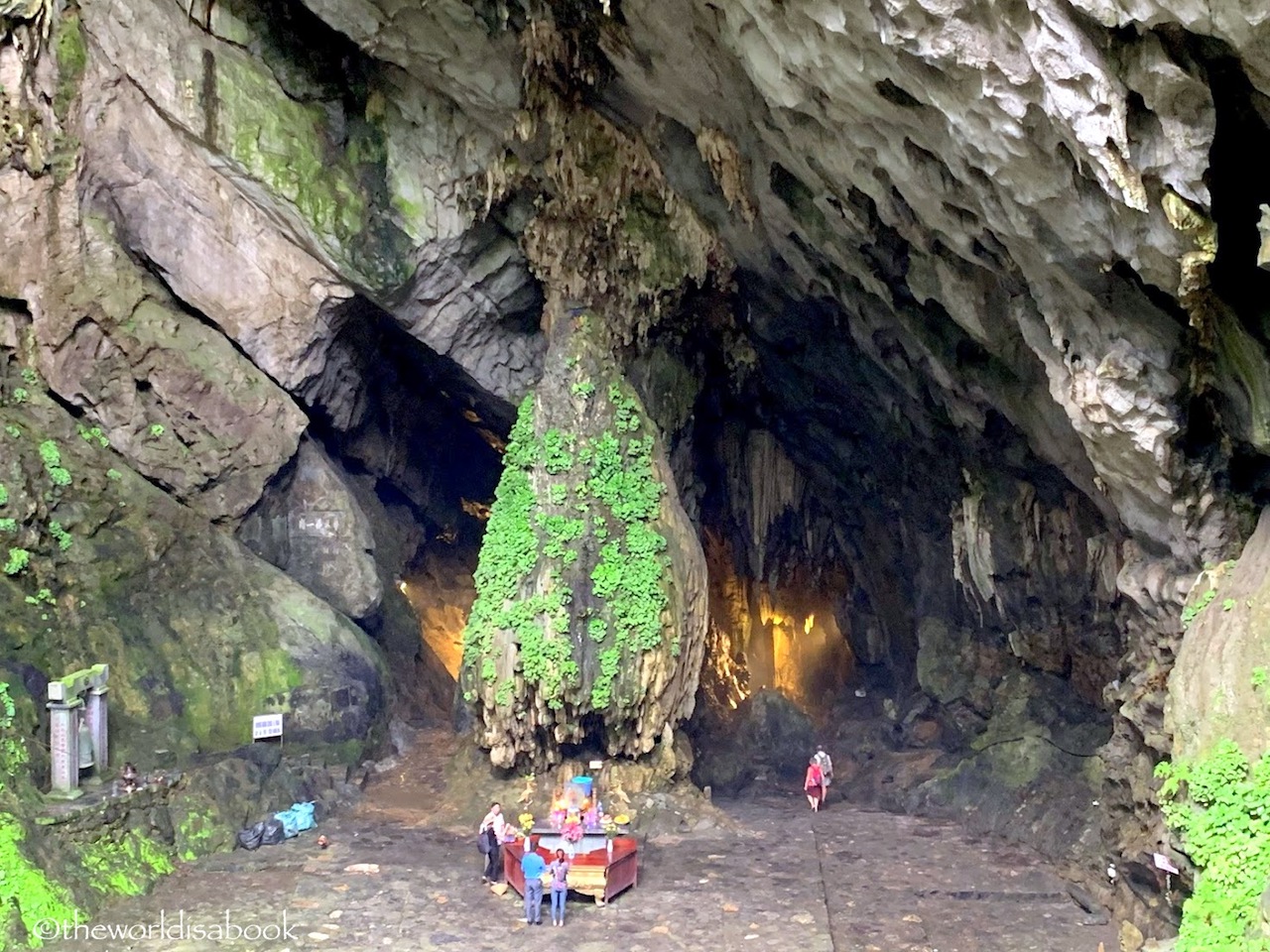
The Perfume Temple or Perfume Pagoda is the central temple inside the cave. It attracts many visitors and pilgrims praying for peace and happiness especially during the Vietnamese New Year or Tet.
I’ve seen photos of this cave filled with so many people. But, there was hardly anyone here during our weekday visit which was great.
Inside the cave were many important statues in Buddhism. Some of the statues on the shrines were carved from the green stone. We didn’t know the rituals but it was very interesting to watch the locals pray and worship.

The Cave Formations
Many of the Vietnamese visitors also believe that the stalagmites and stalactites inside the cave bring good luck. One of the stalactites was supposed to be in the shape of the nine dragons. We found scattered altars in some places.
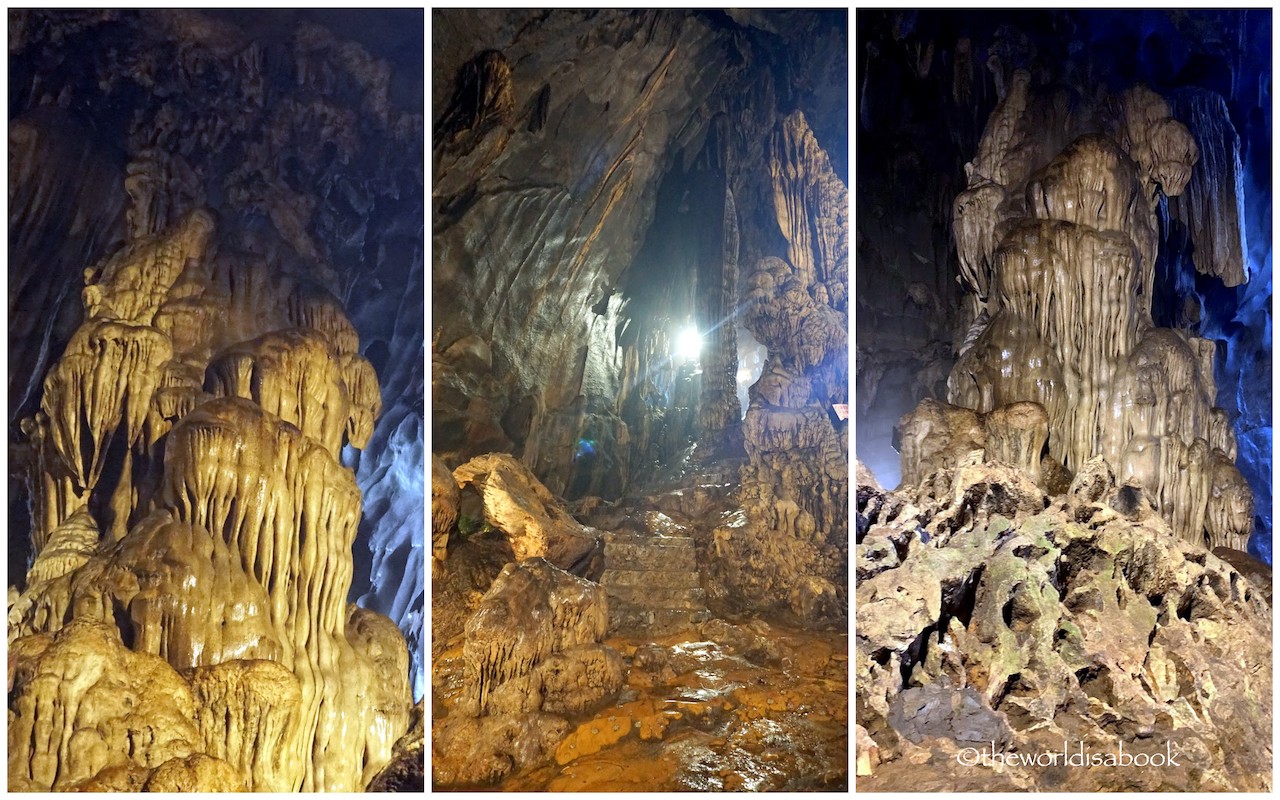
Local believe the other cave formations bring prosperity or if you touch the dun gao or “rice stack” formation, it would bring a bountiful harvest. One of the most popular formation was supposed to offer the chance of increasing of giving birth to a girl. Our guide told us he knew many people who prayed here and it actually worked.

Walking Down from the Cave
For some reason, we thought it was better to walk back instead of ride the cable car. I think our guide convinced us it was a scenic route and a better way to experience the area much like the pilgrims.
Most of the route was downhill but it took almost 30 minutes. We did find some interesting areas like the ones below.
Since it was low season, many of the vendor stalls were closed. I would recommend walking only if you were here during the festival since they probably have many interesting things to see along the way.

My favorite area was the many Buddhist structures and temples at the base of the gondola station. There were many pagodas with different shrines. Some of them were so intricate and colorful. Many of them were open so it was easy to take a peek.

Buddhism was such an interesting religion and our guide tried his best to explain the many symbols found throughout the complex and their meanings. I should have taken notes because now everything is a blur.

There was such a sense of tranquility and spirituality surrounding this place. It was quite a trek to visit the Perfume Pagoda and its surrounding areas but it was a worthy day trip.
We saw beautiful scenery and amazing shrines and had a glimpse of some local customs and culture. It was easy to see why it was a popular excursion if visitors have some extra time in Hanoi.
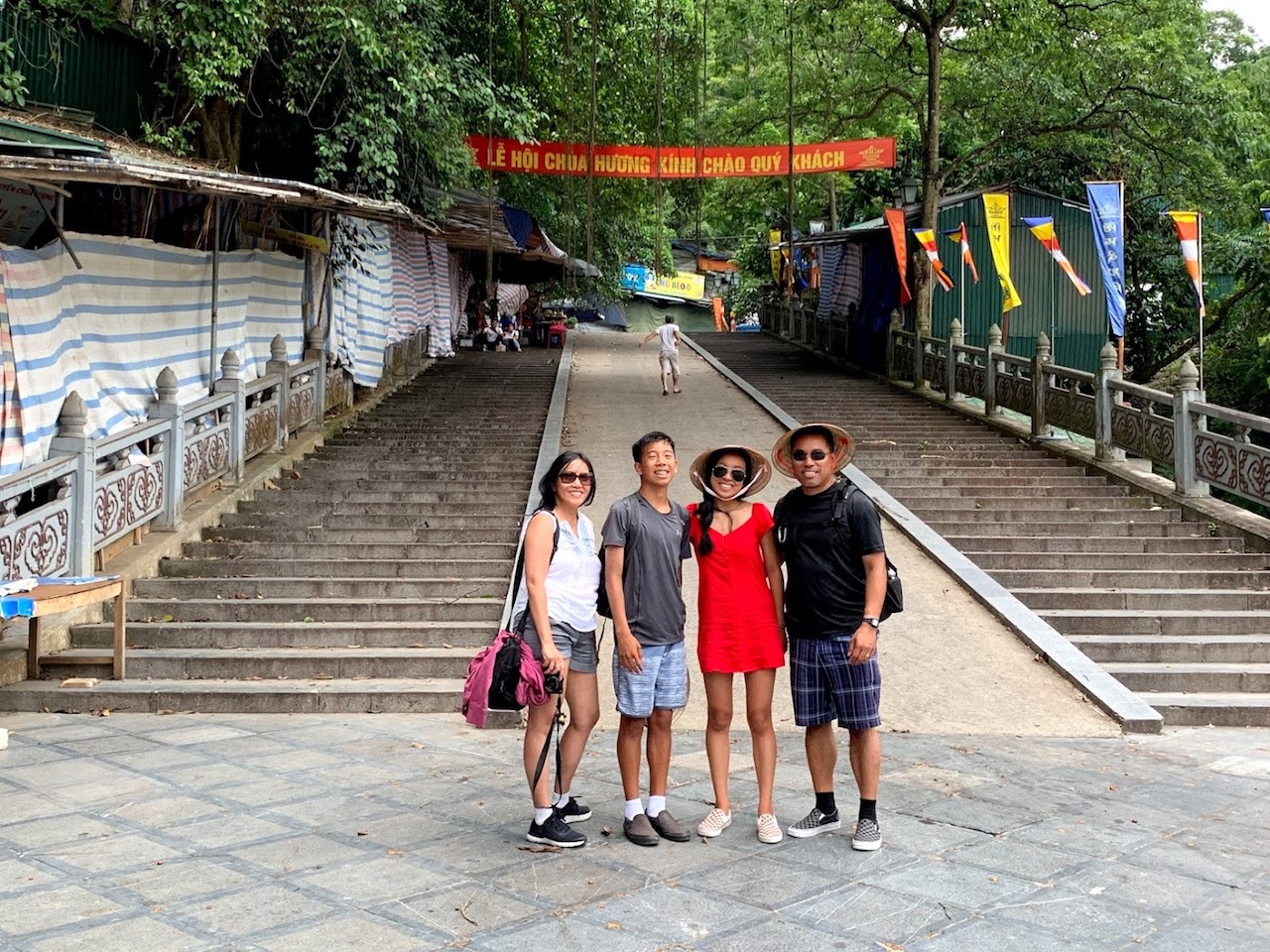
Tips for Visiting the Perfume Pagoda
- Dress Appropriately. Be mindful of the dress codes when entering the religious and sacred places. Shoulders and knees should be covered. It wasn’t really enforced at the cave but we were turned away at the shrines since we were all wearing shorts.
- Wear comfortable shoes. There was a lot of walking and some of the steps were uneven.
- Use the WC/Restrooms wisely. The only restrooms we saw were by the large dining hall area near the cable cars. One section was western style toilets but the one attached to and behind the dining hall were squatting toilets. Use it before boarding the gondolas. Bring hand sanitizer.
- Food and Drinks. There was no shortage of food and drink vendors. We really appreciated the vendors selling cold drinks and ice cream. Be sure you get the bottled or canned ones and not any of the iced ones.
Tips before Visiting the Perfume Pagoda
- Be weather prepared. If you’re visiting during the summer and rainy season, bring rain gear or umbrellas. We were caught in heavy rain that lasted for awhile and then stopped again.
- Check the boat option. There is an option to ride on motorized boats but cost considerably more than the row boats. Check the prices when you get to the pier. They were also trying to negotiate with us for the ride back.
- Go on a guided tour. Choose a reputable agency from Hanoi. Our tour included a driver, tour guide in a private, air-conditioned van. It included lunch and boat, cable car and entrance fees.
- Time your visit. Our guide recommended that the best time to visit is between October and December when the weather is better but also lesser crowds. If you do come here during pilgrimage time or the Chua Huong Festival at the start of the traditional New Year and through April, be prepared for crowds. But, it is more festive and the landscapes are more colorful.
- Read the rest of our tips and one week itinerary in Hanoi.
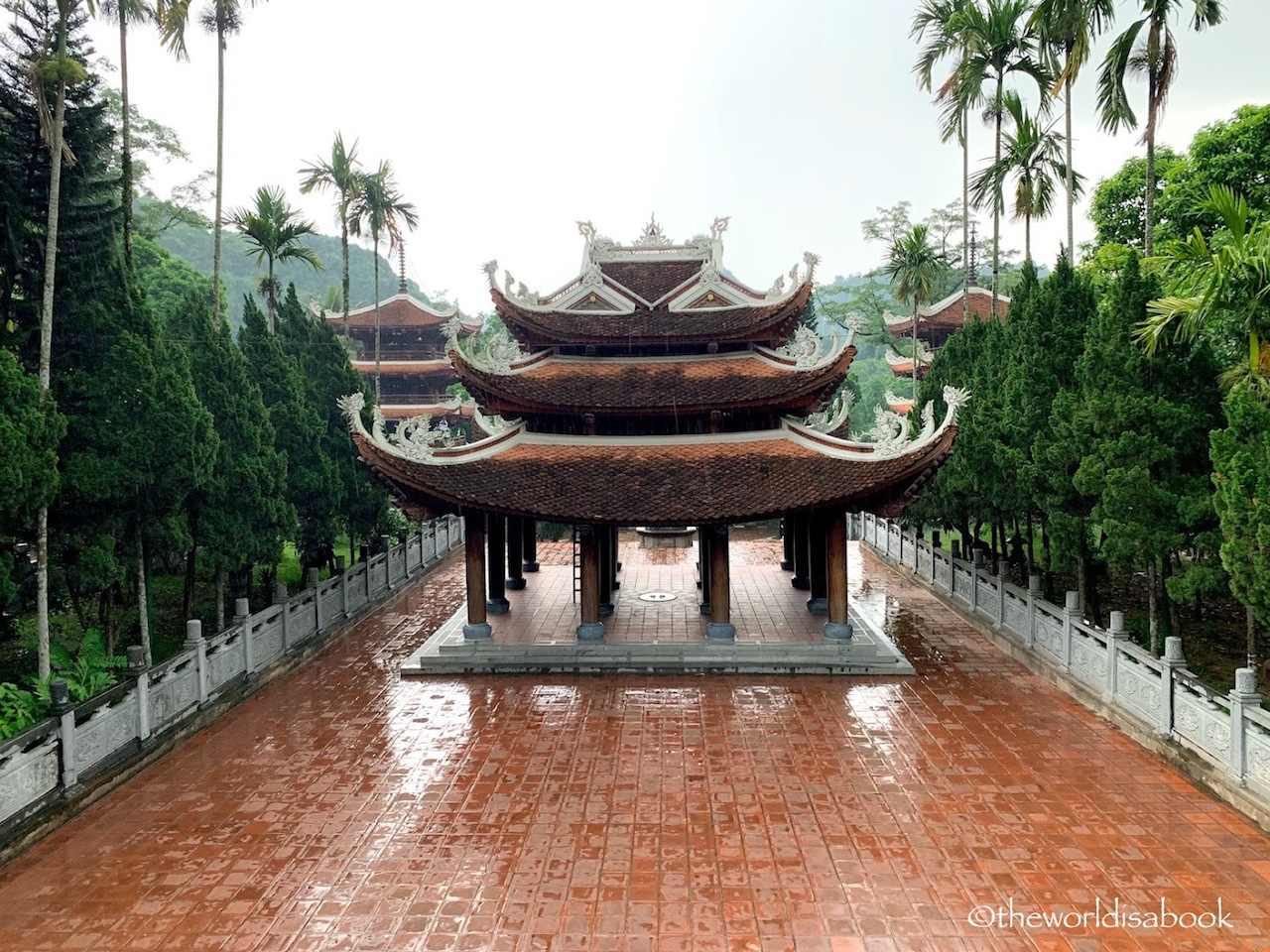
The World Is A Book contains affiliate links and is a member of the Amazon Services LLC Associates Program. If you make a purchase using one of these Amazon links or any of the product links, we may receive compensation at no extra cost to you. See our Disclosure Policy for more information.
Where to stay in Hanoi
- Hilton Garden Inn Hanoi – We stayed at this hotel for six nights and really enjoyed it. We had adjoining rooms with the kids. The rooms were spacious. The location was in the French Quarter area surrounded by cafes and restaurants. Their buffet breakfast was delicious with so many varieties. The hotel staff were all so friendly and treated us so well. Bonus to have a free washing machine and dryer. The price is great for everything it offers.
*See other hotels to stay in Hanoi.
*Read our tips for visiting Hanoi.
Book these Perfume Pagoda Tours from Hanoi
Pin it for later!
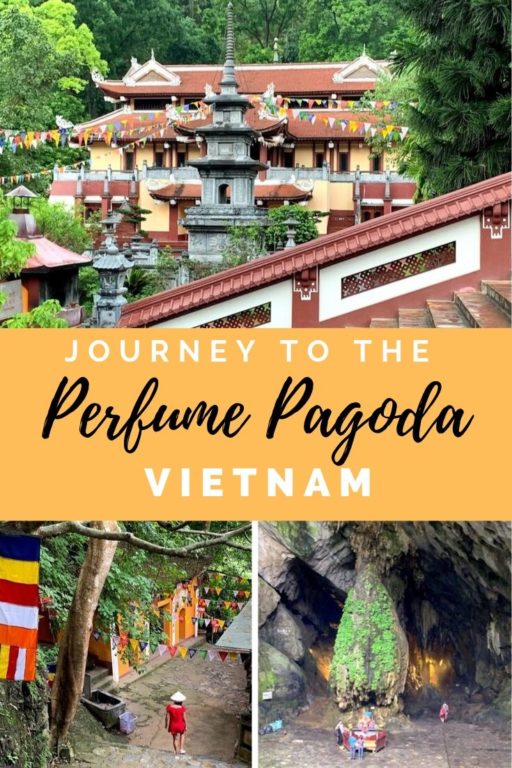
What a wonderful way to experience nature and culture together. Would have never known about this place had it not been for your post!
Fantastic photos, Mary! This looks like it was quite the journey.